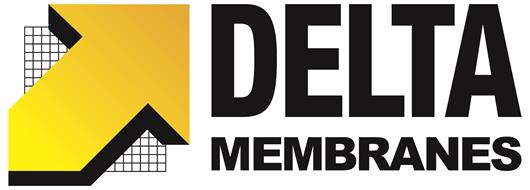 Add My Company
Add My Company

Overview
Delta’s Structural Waterproofing Consultant, Paul Green, CSSW alongside Delta’s MD, Kevin Dodds, were appointed to the design team to collaborate with the Architects, Engineers, Main and Sub-Contractors to fulfil the role of Waterproofing Design Specialists in providing a reliable, watertight solution for this substantial project.
The large-scale basement project consists of a 4-storey deep basement located close to the River Thames in Central London. The proposed subterranean space would offer multiple usage.
This complex project required a waterproofing design which is, able to cope with intermittent/regular hydrostatic pressures created not just by groundwater, but also geographical tidal impacts from the river Thames and potential stress challenges caused by the surrounding infrastructure such as heavily trafficked railway lines in the development’s vicinity.
Structures that experience a high level of vibration from surrounding infrastructure can, over time, have a high propensity to suffer cracks, which could lead to failure of some waterproofing solutions, so therefore careful considerations should be incorporated into the overall waterproofing design from those aspects and, the impacts these factors can have on an elected waterproofing system.
Delta’s design philosophy rotated around creating a robust and suitable waterproofing design, the structure design, a continuous system, sequencing and installation, future maintenance, and serviceability, whilst able to fulfil requirements set out in BS 8102:2022 Protection of below ground structures against water ingress. Code of practice. The British Standard which governs waterproofing of substructures.
Methodology
Initial design meetings
Given the type and form of construction of, water table classification, type of ground and surrounding environments, two forms of waterproofing were required.
During initial design meetings an, externally applied, Type A waterproofing System was initially proposed with a combination of a Type B Waterproofing System.
An ideal waterproofing solution would be defect free; however, it should be considered that defects might occur in the waterproofing. Repairability of a waterproofing system is also a key element in the waterproofing design. During initial design team meetings, Paul was mindful about the practicalities and feasibility of future repairs to the suggested system.
For this project a specialist waterproofing system was required to provide an efficient, compliant, and future proof approach.
Paul’s suggested approach still offered a Type B waterproofing solution (watertight concrete/Structurally Integral Protection) as the primary resistance to potential groundwater ingress, with the inclusion of a secondary form of waterproofing by incorporating Delta’s Type C, Fire Retardant, fully maintainable Cavity Drained System), linked and appropriately piped down through the subterranean Level B4 slabs, which would naturally further reduce associated risk, as these types of systems are both flexible in nature, and are manufactured and engineered to cope with minimal seeps and weeps that may ingress from the concrete design width cracks (Usually in the region of circa 0.2mm/0.3mm).
The underside of intermediate soffits was further protected with 2 coats of Koster NB1 migratory slurry, protecting areas which can be prone to migration of moisture, even through, well compacted/dense concrete anywhere below ground level, and without the presence of hydrostatic pressures
Maintenance of the drainage conduits as well as sumps/pumps, battery backups and monitoring systems are key to the long-term efficacy and success of a Type C System and are an important aspect and consideration of BS 8102 and project warranty providers.
The standard centres/frequency of access ports within a Type C waterproofing system will vary in accordance with a multitude of facets, such as types and forms of constructions, depths, attitudes to risks etc, and in a standard scenario, industry best advice would be that they are incorporated at approximately every 6-8 Liner metre intervals, and or major changes of directions, and that they are sited in convenient places for access/maintenance purposes throughout the design lifetime of the structure.
For more information on FUTURE PROOFING A MULTI-LEVEL COMMERCIAL PROJECT talk to Delta Membrane Systems Ltd - Basement waterproofing

